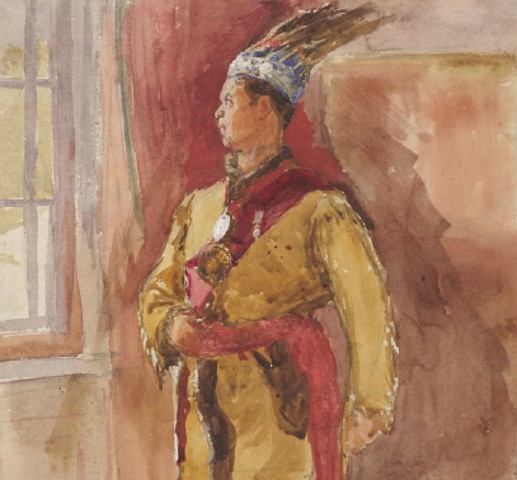
Doctor Oronhyatekha
Early Years
Doctor Oronhyatekha (circa 1870-1880), Acting Chief of the Grand Council. Sydney Hall Prior, date unknown. Courtesy of Library and Archives Canada.
Doctor O Lane, named for Mohawk Doctor Oronhyatekha who lived nearby. Heritage Toronto, 2020.
Portrait of Doctor Oronhyatekha. Courtesy of the Community Archives of Belleville and Hastings County.
Early Years
Oronhyatekha was a Mohawk man born on August 10, 1841 on the Six Nations reservation. His name means “burning cloud” in Mohawk. He grew up on the reserve and as a child he and his family had to relocate when Six Nations reserve lands were reduced to be sold to white settlers. The Haudenosaunee Confederacy was originally granted 950,000 acres of land along the Grand River but in 1847 the reserve land was cut down to 48,000 acres.
Surviving a Residential School
Growing up, Oronhyatekha attended the Mohawk Institute, one of the earliest residential schools in Canada. He was taught English, math, geography, history and a variety of trades, eventually focusing on shoemaking. He lived at the school and only returned home for holidays twice a year. Oronhyatekha tried to run away at least three times. He emerged from the school fit to be a shoemaker the rest of his life.
Realizing his potential
It wasn’t long that Oronhyatekha found himself bored of shoemaking, he realized he was limiting himself and decided to pursue higher education. In 1863 he enrolled in the Toronto School of Medicine and a few years later successfully emerged with his M.D.
Settling in Toronto
For years he practiced in Southern Ontario and New England until eventually settling in Toronto in 1889. He was Supreme Chief Ranger of the Independent Order of Foresters which had headquarters in Toronto. He continued to practice while in Toronto but eventually his duties in the IOF took over, under his guidance it grew to be one of the largest fraternal organizations in the world.

